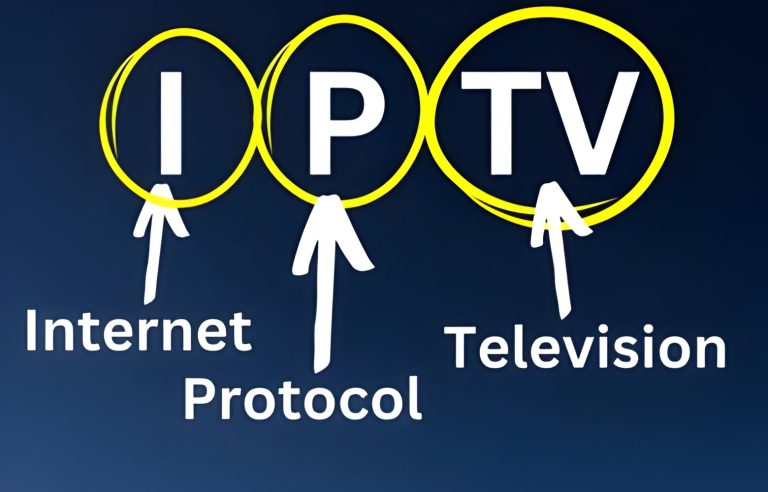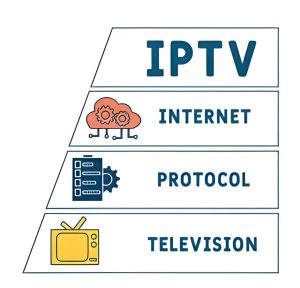
In an extensive and detailed exploration of Internet Protocol Television (IPTV), several resources stand out for their comprehensive coverage. These resources delve into what IPTV is, how it works, the types of IPTV services available, and considerations for using IPTV safely and effectively.
TROYPOINT’s guide offers a broad overview of IPTV, covering essential topics such as what IPTV is, how to use IPTV boxes, the difference between verified and unverified services, and tips for using IPTV safely. It includes recommendations for the best IPTV services like fuboTV and Philo, emphasizing the importance of using a VPN for privacy when streaming live television (TroyPoint).
RedSwitches elaborates on the diverse appeal of IPTV, catering to sports enthusiasts, international viewers, families, movie fans, and tech-savvy individuals. It explains the workings of IPTV, IPTV boxes, and the different types of IPTV formats like live TV, video on demand (VOD), and time-shifted TV. The guide also outlines the pros and cons of IPTV, highlighting its high-quality content, global reach, and potential challenges, such as packet loss sensitivity and network requirements (RedSwitches).
freeCodeCamp offers a straightforward explanation suitable for beginners, detailing how internet protocol television provides access to TV channels using an internet connection, distinguishing between free and paid services, and listing types of IPTV services, including VOD and live television. It also advises on the importance of using a VPN with IPTV services and outlines compatible devices (FreeCodeCamp).
Each of these guides presents a unique perspective on IPTV, providing valuable insights into its functionality, benefits, and considerations. Whether you’re a sports fan looking for live streaming options, a movie enthusiast exploring VOD services, or someone interested in the technical aspects and safety of IPTV, these resources offer thorough guidance to help you navigate the world of IPTV.

Before the early 1990s, the idea of transmitting a television program through the limited bandwidth of a copper telephone line seemed impossible, with the bandwidth required for a digital T.V. signal being vastly higher than that for a speech signal. The development of motion-compensated DCT (Discrete Cosine Transform) video compression and ADSL (Asymmetric Digital Subscriber Line) technology was crucial in overcoming these challenges. These advancements allowed for a significant reduction in the bandwidth needed for T.V. signals and a substantial increase in the data transmission capacity of copper telephone wires, making Video-on-Demand (VOD) services feasible in the 1990s.
The introduction of IPTV, which stands for Internet Protocol Television, marked a significant milestone in this evolution. Precept Software, founded by Judith Estrin and Bill Carrico in 1995, developed Internet Protocol television, a product that facilitated the transmission of audio and video over the Internet. This innovation was acquired by Cisco Systems in 1998, which retained the Internet Protocol television trademark.
The late 1990s and early 2000s saw telecommunications companies and internet service providers pioneering IPTV services. U.S. West launched TeleChoice in Phoenix, Arizona, in 1998, employing VDSL technology. Around the same time, the internet radio company AudioNet started live webcasts, further demonstrating the potential of internet-based broadcasting.
In the UK, Kingston Communications launched one of the first commercial Internet Protocol television services in 1999, followed by similar ventures worldwide, including in Canada by NBTel and later Sasktel. The mid-2000s saw North American companies like SureWest Communications offering high-definition channels over Internet Protocol television, signifying the growing capability and appeal of IPTV technology.
By 2005, IPTV services were expanding globally, with companies like Bredbandsbolaget in Sweden and TPG in Australia launching their Internet Protocol television offerings. The service’s appeal continued to grow, supported by advancements in technology and broader internet accessibility.
The late 2000s to the early 2010s witnessed further expansion of Internet Protocol television, with companies like Pakistan Telecommunication Company Limited introducing Internet Protocol television services in Pakistan and CenturyLink launching Prism in the U.S. Canadian telecommunications giant Bell Canada also entered the Internet Protocol television market, offering services under the brand “Bell Fibe.”
In recent years, Internet Protocol television has continued to evolve, with services being offered alongside FTTH (Fiber to the Home) internet services by providers like Vivo in Brazil and various regional FTTH providers offering Internet Protocol television as part of their service packages.
A notable development in Internet Protocol television technology is the introduction of Manbang in North Korea in 2016. This set-top box reportedly provides video-on-demand services in the country, showcasing the global reach and adaptability of Internet Protocol television technology across different regions and political landscapes.
This journey from the initial scepticism to the widespread adoption and innovation in Internet Protocol television technology illustrates a remarkable evolution in digital broadcasting, reflecting the significant advances in video compression and internet transmission technologies over the past few decades.

In the evolving landscape of digital television, IPTV (Internet Protocol Television) and conventional satellite TV distribution are increasingly being integrated into hybrid networks. This combination leverages the strengths of both technologies, offering a robust solution to bandwidth and distribution challenges.
While Internet Protocol television is adaptable and can be transmitted over various mediums, including satellite, the traditional copper twisted pair cabling used for the last mile of telecommunications can only sometimes meet the high bandwidth demands for competitive Internet Protocol television services. Especially with the rise of high-definition content, the need for higher connection speeds becomes critical, often surpassing the capabilities available to many users through standard broadband connections.
Satellite technology, however, stands out for its ability to deliver high bandwidth, with capabilities exceeding 100 Gbit/s through advanced multi-spot beam technologies. This capacity makes satellite an attractive option for expanding the reach and enhancing the capabilities of Internet Protocol television networks.
One practical approach to integrating satellite into Internet Protocol television architecture is through a direct-to-home (DTH) system. Here, hybrid set-top boxes in consumers’ homes can receive content via both satellite and broadband connections. This setup not only expands bandwidth and enhances service quality but also introduces return channel capabilities, allowing for a mix of live TV multicast via satellite and video-on-demand content delivered over broadband.
Industry experts, such as Arqiva’s Satellite Media Solutions Division, advocate for this hybrid model. They suggest that combining broadband for on-demand content with satellite for live channels presents an optimal use of technology, maximizing the benefits of both IPTV and satellite distribution to provide a comprehensive and high-quality television service experience.

For an optimal IPTV streaming experience, understanding bandwidth requirements is essential. Bandwidth influences various aspects of streaming, including video quality, the number of concurrent streams, and interactive features like video-on-demand and interactive TV guides. To ensure smooth streaming, Internet Protocol television providers invest in infrastructure, such as high-capacity servers and efficient network equipment, and utilize Content Delivery Networks (CDNs) to optimize bandwidth usage. Quality of Service (quality of service) management is also crucial for prioritizing bandwidth allocation to maintain high performance for services like live broadcasts (IPTV Hub).
When planning an Internet Protocol television or OTT service, it’s important to check if your network is ready for video streaming. This includes ensuring enough bandwidth throughout the network to support the planned number of IPTV users and that all network and access equipment can handle multicast and unicast streaming. The network must support multicast for IPTV, with special considerations for equipment like DSLAMs and DSL modems to avoid issues that can impact user satisfaction. It’s also essential to have tools for monitoring the performance of DSL lines to ensure they can support IPTV services (Turnkey Solution).
For IPTV users, the recommended internet speeds vary depending on the desired video quality. Standard Definition (SD) streaming typically requires 3 to 5 Mbps, High Definition (HD) needs 5 to 10 Mbps, and Ultra High Definition (UHD) demands 15 to 25 Mbps. To achieve the best IPTV streaming experience, users should consider wired connections when possible, upgrade their internet plan if necessary, limit the number of concurrent device streams, and manage other online activities that could consume additional bandwidth (ROYIPTV).
By paying attention to these bandwidth requirements and optimization strategies, both IPTV providers and users can significantly enhance the streaming experience, ensuring high-quality video playback without buffering or interruptions.
Creating a simplified network diagram for an IPTV (Internet Protocol Television) system involves illustrating the essential components and how they connect to deliver video content over an IP network. Below is a breakdown of the key components you’d typically include in such a diagram:
Content Source: The origin of the video content, which could be live TV channels, on-demand movies, or digital video recordings. These sources send the content to the IPTV system for distribution.
Video Headend: This is where the content is received, processed, and encoded into a digital format suitable for delivery over an IP network. The headend handles tasks like compression, encryption, and possibly ad insertion.
Content Delivery Network (CDN): A CDN is used to distribute the content more efficiently and with higher quality to a large number of viewers. It reduces latency and buffering by caching content closer to the end-users.
ISP Network: The Internet Service Provider (ISP) network provides the infrastructure to transport the IP video streams from the CDN to the end-users’ homes.
Router/Gateway: At the user’s home, a router or gateway connects to the ISP network, providing access to the IPTV services.
Set-Top Box (STB) or Smart TV: The end-user device that decodes the IP video streams and displays the content on a television. Some systems may allow viewing on other devices like smartphones, tablets, or PCs.
User Interface/Application: The software layer that allows users to interact with the IPTV service, such as selecting channels, browsing a video on demand library, or viewing an electronic program guide (EPG).
Now, let’s draw a simplified network diagram based on the components mentioned.

Here’s a simplified network diagram for an IPTV system. This diagram visually represents the flow of video content from the source to the viewer, incorporating key components like the Content Source, Video Headend, Content Delivery Network (CDN), ISP Network, Router/Gateway, Set-Top Box (STB) or Smart TV, and the User Interface/Application. It’s designed to highlight the essential parts of an IPTV system and how they connect to deliver video content over an IP network.
To calculate the bandwidth capacity required to simultaneously support two HDTV streams, two SD (Standard Definition) TV streams, High-Speed Data (HSD), and voice services, we need to consider the average bandwidth consumption of each service. Here’s a general guideline for the bandwidth requirements:
Using the higher end of the bandwidth estimates for better quality and to ensure a buffer:
Now, let’s calculate the total bandwidth and create a table to summarize these values.
Here’s a table summarizing the bandwidth requirements for simultaneously supporting two HDTV streams, two SDTV streams, High-Speed Data (HSD), and voice services:
| Service | Number of Streams/Services | Bandwidth per Stream/Service (Mbps) | Total Bandwidth Required (Mbps) |
|---|---|---|---|
| HDTV Stream | 2 | 8 | 16 |
| SDTV Stream | 2 | 3 | 6 |
| High-Speed Data (HSD) | 1 | 10 | 10 |
| Voice | 1 | 0.1 | 0.1 |
| Total | - | - | 32.1 |
Hi, How can we help